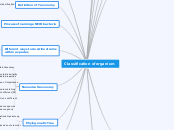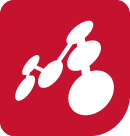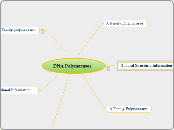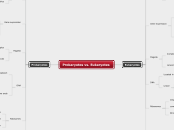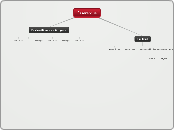Secretery Pathway
Depending on a protein's function, sometimes there are additional steps before a protein can be useful to a cell.
In the secretory pathway, a signal sequence binds to the ribosome, that's creating a polypeptide, to the SRP on the Endoplasmic Reticulum. In the ER, a process called glycolysis occurs, where carbohydrates are bound, creating a more complex protein. After carbohydrates are added, signal peptidase removes the signal sequence, and the protein can be sent to the Golgi apparatus. Here, proteins are packaged and sent to work for lysosomes or the plasma membrane.
Glycolyzation
Glycosylation is the process by which a carbohydrate is covalently attached to a target macromolecule, such as proteins and lipids.
Translation
and Protein Synthesis- Charlotte
Termination
- When the ribosome reaches a stop codon (UAA, UAG, or UGA), no tRNA matches.
- A release factor binds, causing the ribosome to release the finished protein.
- The ribosome subunits separate and can be reused.
Key parts of Termination in translation
- When the ribosome reaches a stop codon (UAA, UAG, or UGA), no amino acid-carrying tRNA matches.
- Instead, a release factor binds, causing the ribosome to release the finished protein.
- The two ribosomal subunits separate from each other and can then be reused.
Key step to Elongation in translation:
- Now that the ribosome is completed, and the first t-RNA has bound to the start codon in the P slot, more t-RNAs can bind their anti-codons to codons along the mRNA
- A codon matching tRNA brings in the correct amino acid with it.
- The ribosome links the new amino acid to the growing protein chain.
- The ribosome moves to the next codon, and the process repeats, adding more amino acids.
Ribosomal slots
- The initiator tRNA enters the middle P slot to begin protein synthesis
- This is where the chain will begin to form
- The ribosome will move across the mRNA, reading 5' to 3' with a new amino acid carrying tRNA entering the A slot
- As amino acids are attached going down the mRNA, the tRNA detaches and exits from the E slot in the ribosome
Key steps to initiation in translation:
- The small ribosome subunit binds to the 5' cap of the mRNA.
- It scans along the mRNA to find the start codon (AUG).
- The initiator tRNA (carrying methionine) pairs with the start codon.
- The large ribosome subunit joins, forming a complete ribosome.
- from here a a polypeptide/ amino acid chain can begin to form
**Nearly identical to translation in eukaryotes,
- note that translation is coupled with transcription in prokaryotes. Both processes occur simultaneously in the cytoplasm, unlike in eukaryotes.
- When the ribosome reaches a stop codon (UAA, UAG, or UGA), no tRNA matches.
- A release factor binds, causing the ribosome to release the finished protein.
- The ribosome subunits separate and can be used again.
- The ribosome reads the next codon on the mRNA.
- A matching tRNA brings in the correct amino acid.
- The ribosome links the new amino acid to the growing protein chain.
- The ribosome moves to the next codon, and the process repeats, adding more amino acids.
- The small ribosome subunit binds to a specific sequence on the mRNA called the Shine-Dalgarno sequence (just before the start codon).
- The initiator tRNA (fMet) pairs with the start codon (AUG).
- The large ribosome subunit joins to form a complete ribosome.
Transcription
and RNA processing- Charlotte
In prokaryotes, transcription occurs in the cytoplasm and is coupled with translation.
- When RNA polymerase reaches a special sequence called a terminator, it stops.
- The RNA strand is released.
- RNA polymerase moves along the DNA, building an RNA strand by matching RNA bases to the DNA template.
- The new RNA strand grows longer as the enzyme moves.
Initation
- RNA polymerase attaches to a specific spot on the DNA called the promoter.
- The DNA unwinds so the enzyme can read one strand.
- The newly made pre-mRNA is capped at the 5′ end.
- Introns are removed (splicing), and exons are joined.
- A poly-A tail is added at the 3′ end.
- The mature mRNA is exported from the nucleus to the cytoplasm for translation.
Termination
- RNA polymerase II transcribes beyond the end of the gene.
- The pre-mRNA is cleaved, and a poly-A tail is added.
- RNA polymerase II detaches from the DNA.
Elongation
- RNA polymerase II begins synthesizing RNA using the DNA template strand.
- The enzyme moves along the gene, building the pre-mRNA strand in the 5′→3′ direction.
- Elongation factors help the polymerase move through nucleosomes.
Initiation
**Note: before initiation occurs, DNA is packed into nucleosomes by histones that make DNA accessible
- Transcription factors bind to the promoter region (e.g., TATA box).
- TATA box tells RNA polymerase II to "start here."
- RNA polymerase II is recruited to the promoter (written as +1), forming the pre-initiation complex.
- The DNA strands are separated, exposing the template strand.
Mutations- Cambry
Mutations are any types of changes in DNA
Mutations occur in the coding sequence
Frameshift Mutations
Change in DNA= Reading frame changed causing a change in amino acids
Only see frameshift when one or two nucleotides are added/deleted! Anything more isn't a frameshift
Nonsense Mutations
Change in DNA= stop codon
Missense Mutations
Change in DNA= Amino acid changed
Silent Mutations
Change in DNA= No change in amino acid
Promoter
Operator
DNA switches, positioned near/within the promoter
Cluster structural genes
A cluster of genes that are involved in the same pathway and regulated together
The Lac Operon
Negative regulation
Two scenarios:
When lactose is not present, lacI bind to operator and prevent expression of lac operon genes.
When glucose is present, it inhibits adenylyl cyclase, which results in no cAMP. so CAP is not activated, and cannot help RNAP bind promoter.
Positive regulation
When lactose is present, lacI binds to lactose, so it no longer bind to the operator sequence, so RNAP can now bind promoter. In addition, when glucose level is low, adenylyl cyclase level is high, which converts ATP to cAMP. cAMP binds CAP and activated CAP helps RNAP to bind promoter to start transcription.
CAP
Adenylyl cyclase converts ATP to cAMP, which binds CAP and activate it. Activated CAP helps RNAP to bind promoter to start transcription.
Adenylyl cyclase
Repressor gene
LacI: encode repressor protein
Structural genes
LacZ: encode for beta-galactosidase
LacY: encode for beta-galactosidase permease
LacA: encode for beta-galactosidase transacetylase
Prokaryotic gene expression - Daniel
Multiple steps
Protein processing
Translation
Chromatin modification
Transport to cytoplasm
RNA processing
Transcription
Transcription factors
Specific
Increase (activators) or decrease (repressors) level of transcription
General
Bring low level of transcription (background)
Regulation
Distal control elements (enhancers)
Activator proteins bind to enhancers in DNA. A DNA-bending protein brings the bound activators closer to the promoter, further recruiting general TFs and mediator protein to form transcription initiation complex on the promoter.
Proximal control elements
Chromosomes
One way to control gene expression is to keep the chromosomes compacted so the genes are not accessible to enzymes and proteins for transcription.
Nucleosome
Histone Octamer
2 copies of histone proteins each: H2A, H2B, H3, H4.
H1 Histone
Eukaryotic gene -expression - Daniel
DNA Structure/Replication - Daniel
Double Helix
Base pairing
A is paired with T, G is paired with C
Chargaff'rule
The amount of Adenine equals the amount of Thymine. The amount of Guanine equals the amount of Cytosine.
Genetic Material
Hershey and Chase Experiment
Bacteriophage is only made of two components: DNA and proteins. Hershey and Chase labeled the DNA with P32, and proteins of bacteriophage with S35. The bacteriophage and bacteria were mixed in a tube, and centrifuged the mixture. The bacteria cells form a pellet at bottom and free phages (lighter) remain at the supernatant. They found that only P32 is detected in pellet , indicating that it was the DNA injected inside bacteria and not protein. DNA is the genetic material.
Griffith Experiment
Fredrick Griffith studies Streptococcus pneumoniae. He used two strains of the bacteria, the pathogenic S strain and the nonpathogenic R strain. He found that the living S cells kill mouse, while injecting living R cells or heat-killed S cells, mouse are healthy. However, when combining heat-killed S cells and living R cells, he found that the R cells are converted into S cells and kill the mouse. This experiment shows that some genetic traits can be transferred from S to R strain.
Replication
Bidirectional
ORI is in the middle of the replication bubble. The two forks at each end of the bubble move in opposite direction, so DNA replication is bidirectional.
Lagging Strand
Nucleotides are added in short segments called Okazaki fragments, in the opposite direction of the fork
Leading Strand
Nucleotides are added continuously in the direction of the fork
Proteins
Ligase
Joins 3' end of DNA of leading strand and joins Okazaki fragments of lagging strand
DNA Polymerase I
Removes RNA nucleotides of primer from 5'end and replaces them with DNA nucleotides
DNA Polymerase III
Using parental DNA as a template, adds nucleotides only to the 3' end of DNA strand
Primase
Synthesizes RNA primers using parental DNA as a template
Topoisomerase
Relieves the strain caused by DNA unwinding
Single-strand binding protein
Binds and stabilizes single-stranded DNA
Helicase
Unwids parental double helix at replication forks
ORI
ORI is the origin of DNA replication. DNA get separated here and form a bubble, which is called a replication bubble and there are two forks at each end of the bubble
Eukaryotes
Long DNA molecules have multiple ORI and replication bubbles.
Prokaryotes
Prokaryotic DNA is circular and there is only one ORI.
Semi-conserved
Two strands of the parental DNA separate, and each functions as a template for synthesis of a new complementary strand.
Messleson and Stahl Experiment
Three models were proposed: conservative, semi-conservative, and dispersive models. In the experiment, Messleson and Stahl grow bacteria in a growth medium that contains the heavy isotope of N15, and transferred the bacteria to medium containing N14. After the bacteria were grown for one round, DNA were extracted and centrifuge in CsCl gradients, there is only one intermediate density band showing. After bacterial were grown for two rounds of replication, there appeared two bands: one intermediate density, and one light density. The results supported the semi-conservative model.
Cell membranes-Charlotte
Biological Membrane: Cell membranes are selectively permeable barriers
Selective Permeability
Highly permeable molecules (meaning molecules that are able to easily pass through the phospholipid bilayer) include small, nonpolar molecules. Large, uncharged, polar molecules have lower permeability and charged ions have the lowest permeability.
Molecules that have low permeability typically need assistance from transport proteins to pass through the membrane.
Active Transport
Active Transport is the movement of substances from a low to high concentration. The most important element of active transport that separates it from passive transport is the use of cellular energy (ATP).
Electrogenic pumps:
- a transport protein that generates voltage across a membrane, this is known as the membrane potential
- Can also help store energy that can be used for cellular work
Ion Channels
There are two main types of ion channels:
- GATED: Open and close in response to stimuli
- Stretch-gated – sense stretch – open when membrane is mechanically deformed
- Ligand-gated – open and close when a neurotransmitter binds to channel
- Voltage-gated – open and close in response to changes in membranepotential
Contransport
Cotransport is the coupled transport by a membrane protein. This occurs when active transport of a solute indirectly drives the transport of other substances.
Sodium-Potassium Pump
Passive Transport
Passive transport is the diffusion of a substance across a membrane, going with the concentration gradient. In passive transport it's important to note that there is no energy investment.
Facilitated Diffusion
Facilitated diffusion is a type of passive transport where molecules move across a cell membrane with the help of transmembrane proteins (channel or carrier proteins), down their concentration gradient, without the use of cellular energy.
Osmosis
Osmosis is the movement of water across a semi-permeable membrane from a region of low solute concentration (high water concentration) to a region of high solute concentration (low water concentration), which is done without the use of energy.
Key terms related to Osmosis:
- Tonicity is the ability of a surrounding solution to cause a cell to gain or lose water
- Isotonic solution: Solute concentration is the same as inside the cell; no net water movement across the plasma membrane
- Hypertonic solution: Solute concentration is greater than that inside the cell; cell loses water
- Hypotonic solution: Solute concentration is less than that inside the cell; cell gains water
Water balance in plant cells:
- Hypotinic solution-- Turgid (normal)
- Isotonic solution-- Flaccid
- Hypertonic solution-- Plasmolyzed
Diffusion
Diffusion is the movement of molecules across a cell membrane from an area of high concentration to an area of low concentration. This method of transportation requires no energy input from the cell.
Membrane fluidity
- The type of hydrocarbon tails present in the phospholipid (ie. saturated, unsaturated) affects the plasma membranes fluidity.
- Unsaturated hydrocarbons tails with kins leas to a fluid consistency
- Saturated hydrocarbon tails lead to a viscous state
- Every phospholipid has a specific phase transition temperature.
- When above ideal temperature the lipid becomes fluid in a liquid crystalline phase.
- When below this temperature the lipid is rigid and in a gel phase.
Membrane Proteins
Transmembrane protiens are imbeded in the phospholipid bilayer with an extracellular facing side and a cytoplasmic facing side.
Some functions of membrane proteins include:
- transportation
- enzymatic activity
- signal transduction
- cell-cell recognition
- intercellular joining
- attachment to the cytoskeleton and ECM (extracellular matrix)
Phospholipid Bilayer
Cell membranes are composed of a phospholipid bilayer. This phospholipid bilayer comprises an outer hydrophilic head and an inner hydrophobic tail.
Cholesterol in membranes
Helps phospholipid bilayer to maintain ideal consistency, rigid enough to have structure but fluid enough to move materials through the membrane.
Aldosterone Pathway
Aldosterone is a steroid hormone that is secreted by cells of the adrenal gland and enters cells all over the body. The hormone passes through the plasma membrane, binds the receptor protein in the cytoplasm, and activates it. The active receptor enters the nucleus and binds to specific genes, promoting transcription of genes.
Cell Signaling - Daniel
Signaling Molecules
Molecules released by a cell which is received by another cell
Hydrophilic/Polar
Hydrophobic/nonpolar
Receptor
Present in a target cell that receives a signal
Intracellular Receptor
Present in cytoplasm in nucleus.
Membrane Receptor
Ion Channel Receptor
Acts as a gate for ions. When a signal molecule binds a receptor, the receptor changes shape, allowing specific ions to go through.
G-Proteins Coupled Receptor
Transmembrane protein with alpha helix domain. Once it is bound by signaling molecule, its shape is changed which allows it to bind to G protein.
Cellular responses
An example of cellular response occurs in the nucleus. Signaling pathways finally activate a transcription factor which binds DNA and turns on or off genes in the nucleus.
Protein Kinase A
cAMP binds and activates protein kinase A, which goes on to activate another kinase and so on.
ATP to CAMP
Activate adelylyl cyclase converts ATP to cAMP, which is a second messenger. Once cAMP started to activate the signal transduction cascade, it is converted to AMP by phosphodiesterase.
Adenylyl Cyclase
Active G protein can then activate Nearby enzyme, such as adenylyl cyclase.
G protein
When it is bound to GPCR, it changes shape and makes the bound GDP to be replaced with GTP. G protein with GTP bound is activated.
Local
If cells release the ligands or signal molecules in close proximity to cells that have the receptor to receive the signals, then it is local signaling.
Synaptic
Send neurotransmitters
Paracrine
Send secretary vesicles to target cells
Long Distance
If the cell receiving the signal is far from the cell, and it has the receptor that receives the signal, then it is long distance signaling. One example is hormonal signaling.
Photosynthesis - Cambry
The goal of photosynthesis is to produce glucose (sugar)
H2O is oxidized and CO2 is reduced
C4 Photosynthesis
Enhance CO2 uptake and reduces photorespiration to adapt to hot, arid climates
Stage 1: Light Reactions
Located in the thylakoid membrane
Convert solar energy into chemical energy
-H2O is split to provide electrons and protons (H+)
-O2 is released as a waste product
-The electron acceptor NADP+ is reduced to NADPH
-ATP is generated by adding a phosphate group to ADP in a process called photophosphorylation
Input:
-Light
-H2O
-NADP+
-ADP+Pi
Output:
-ATP
-NADPH
-Oxygen
-H+
Cyclic Electron Flow
Only PS1 is used!
Formed:
-ATP
Electrons are recycled back through Photosystem 1, where ATP is the only thing generated
Non-cyclic or Linear Flow of Electrons
H2O is oxidized
Forms:
-Oxygen
-NADPH
-ATP
-Electrons move down a path
-Water is first oxidized in photosytem II (PS II)
-Electrons move down a transport chain to photosytem (PS I)
-ATP is generated
-NADP+ is reduced to NADPH
CAM Plants
Photosynthetic adaption to arid conditions
-CAM plants opened their stomata's at night and incorporate CO2 into organic acids
-Stomata's close during the day and CO2 is released to form organic acids and used int he Calvin Cycle
Temporal separation of steps
Same Cells
Spatial separation of steps
Occurs in different cells
Stage 2: Calvin Cycle
Occurs in the stroma
Produces sugar from CO2 with the help of NADPH and ATP produced by the light reactions
-CO2 is initially incorporated into an organic molecule through a process called carbon fixation
-ATP provides the necessary chemical energy, and NADPH provides electrons needed to reduce CO2
Input:
-ATP+Pi
-NADPH
-CO2
Output:
-ADP+Pi
-NADP+
-CH2O
Phase 1
-CO2 is taken in through the stomata and added to Ribulose biphosphate to form Rubisco- an organic molecule
-From Rubisco, 6 carbon intermediate are formed
Cell Respiration - Cambry
Cellular respirations purpose if to make ATP
- Glucose is oxidized
- Oxygen is reduced
- Three total processes: glycolysis, pyruvate oxidation and critic acid cycle, and oxidative phosphorylation
Oxidative Phosphorylation
Chemiosmosis
Protons go back through the ATP synthase, moving from a high concentration to low concentration
The energy from the ATP synthase gives ADP energy to make ATP
Electron Transport Chain (ETC)
Components:
-Complex I, II, III, IV
-Q
-Cyt
Energy is released at each step
-NADH --> complex I --> Q --> complex III- ->Cyt c--> complex IV
Protons are getting pumped into inner membrane
C6H12O6 is oxidized
CO2 is reduced
Pyruvate Oxidation and Citric Acid Cycle
Citric Acid Cycle
Formed:
ATP= 1
NADH= 3
FADH2= 1
Starting molecule: Isocitrate
Enzyme: looses electrons --> NAD to NADH
Product: ketoglutarate
Starting molecule: Acetyl CoA
Enzyme: Oxaloacetate
Product: Citrate
Pyruvate Oxidation
-Pyruvate, from glycolysis, is oxidized to form Acetyl CoA
-Oxygen is required
Glycolysis
Occurs in the cytoplasm.
Total output- 4 ATP, 2 NADH, 2 pyruvate
Net output- 2 ATP, 2 NADH, 2 pyruvate
Energy Payoff Phase
Last five steps- generate net gain by producing ATP that was invested
-2 pyruvate, 2 NADH, and 4 ATP are formed
Energy Investment Phase
First five steps- require energy to prepare molecule for breakdown
-2 ADP are formed
Step Three
Starting molecule: fructose 6-phosphate
Enzyme: phosphofructokinase
Product: fructose 1,6-biphosphate
Step One
Starting molecule: glucose
Enzyme: hexokinase
Product: glucose 6-phosphate
Functional groups
Methyl Group (-CH3)
Phosphate Group (-OPO3^2-)
Sulfhydryl Group (-SH)
Amino Group (-NH2)
Carboxyl Group (-COOH)
Hydroxyl Group (-OH)
Carbonyl group (>C=O)
Biological Molecules- Charlotte
Protiens
Protein folding
Quarternary
Tertiary
Secodary
Beta pleated sheets
Alpha Helices
Primary
R groups
Basic
Acidic
Non-polar
Carbohydrates
Carbohydrates serve as fuel and building materials
Alpha Glucose
Beta Glucose
Types of polysaccharides
storage
starch
glycogen
structure
cellulose
Isomers
Structural Isomers
Enantiomers
Geometric Isomers
Lipids
NOTE: LIPIDS ARE NOT POLYMERS!
- A process of dehydration occurs to make a fat molecule.
- Heating can change the chemical composition of an oil/fat. Repeated heating and cooling cycles can denature and change the composition of double bonds. However, only a fraction of fats are effected though.
Trans fats
removing double C bond and adding Hydrogen to convert cis to trans fat, however this incomplete formation of unsaturated to saturated fat is what leads to trans fat.
Unsaturated
Double bonded carbon
Liquid at room temperature
Hydrophobic
Saturated
"saturated with Hydrogen"
solid at room temperature
Nucleic acids
Nucleotides
Nucleic acids are polymers made of monomers-- called nucleotides
5 carbon sugar
phosphate group
Phosphodiester link connects phosphites and sugars
Nitrogenous base
DNA
- DNA provides directions for its own replication
- DNA directs the synthesis of messenger RNA (mRNA), and through mRNA, DNA can control protein synthesis, this process is known as gene expression
- DNA is double helix polymer
- Deoxyribose (DNA)--> no oxygen
G/C and A/T
H-bonding through complitary base pairing forms DNA double helix
RNA
Unlike DNA, RNA has oxygen
G/C and A/U
Partially Charged Atoms
Dipole-dipole Interaction
Hydrogen Bond
Water Properties
Universal Solvent
Denser as liquid than solid
High Heat of Vaporization
High Specific Heat
Cohesive behavior
GPCR Signaling Pathway
Polar
Sharing of electrons between two atoms with an EN difference of 0.5 or greater
Examples in Biological Molecules
Ester bond
Glycosylic linkage
Phosphodiester bond
Peptide bond
Nonpolar
Sharing of electrons between two atoms with an EN difference of less than 0.5
Hydrophobic Interactions
Van Der Waals
Structure and Function of Cells- Cambry
Eukaryotic Cells
Both
Vesicles
Vehicle of the cell, the golgi apparatus packages things into vesicles where vesicles can then transport cellular materials.
Smooth ER
attached to nucleus synthesizes lipids (can also help detoxify)
Rough ER
composed of ribosomes that perform protein synthesis
Cytoskeleton
reinforces cell shape; functions in cell movement; components are made of protein, includes…
Microtubules
made of tubulin, this hollow shape maintains the shape of the cell. very structural and moves organelles
Intermediate filament
in the middle, anchor organelles to the cell and help maintain a cell’s shape, composed of keratin proteins.
Microfilaments
made of actin, helps maintain cell shape but also aid with movement
Microvilli
projections that increase the cells surface area
Peroxisome
organelle with various specialized metabolic functions; produces hydrogen peroxide as a by product and then converts it to water
Mitochondria
organelle where cellular respiration occurs and most ATP is generated
Lysosomes
digestive organelle where biomolecules are broken down, hydrolysis reaction
Golgi apparatus
organelle active in synthesis, modification, sorting, and secretion/transportation of cell products
complexes that make proteins; free in cytosol or bound to rough ER or nuclear envelope
Plasma membrane
membrane enclosing the cell
Chromatin
material consisting of DNA and protein; visible in a dividing cell as individual condensed chromosomes
Nucleolus
non membranous structure involved in production of ribosomes; a nucleus has one or more nucleoli
Nuclear Envelope
double membrane enclosing the nucleus; performed by pores; continuous with ER, also known as the nuclear lamina
Plants
Plastids
store food and make pigment
Plasmodesmata
channels found in plant cells that allow for the movement of water and other materials to move between cells
Central Vacuole
stores water, nutrients, and waste
Chloroplast
double membrane organelle that has its own DNA and performs photosynthesis
located outside the cell membrane, made of cellulose, and helps maintain cell shape
Animal
Gap junctions
structures that connect cells, things can pass through very easily
Tight junctions
secure cells very tightly, keeps stuff from freely moving around
Desmosomes
structure connects cells together that are semi-sealed. Desmosomes use proteins and are programed to selectively allow materials
Extracellular matrix
located outside the membrane, this structure has many parts: fibronectin, proteoglycan (animal cell ECM), and collagen. Changes in this structure can trigger processes inside the cell
proteoglycan
found in the ECM, proteoglycan are proteins with sugars attached, involved in organizing extracellular matrix
Prokaryotic Cells
Bacteria
Endospore
survival under harsh environmental conditions
Flagella
movement
Pili
bacterial mating
Fimbriae
attachment to surfaces
- slime layers
adherence to surfaces
Capsules
resistance to phagocytosis
Cell wall
Gives bacteria shape and protection from lysis in dilute solutions
Periplasmic Space
contains hydrolytic enzymes and binding proteins to nutrient processing and uptake
Nucleoid
localization of genetic material (DNA)
Inclusion bodies
storage of carbon, phosphate, and other substances
Ribosomes
protein synthesis
Gas Vacuole
buoyancy for floating in aquatic environments
Plama Membrane
selectively permeable barrier, mechanical boundary of cell, nutrient and waste transport, location of many metabolic processes (respiration and photosynthesis), detection of environmental cues for chemotaxis
Archaea
Cytoplasm
gel like substance that fills the cell and and keeps the organelles in place
Circular chromosome
stores genetic information
Chemical Bonds-Daniel
Covalent Bond
Two atoms share one or more pairs of electrons to achieve stability.
Ionic Bond
Transfer of electrons between oppositely charged irons
Can lead to ion-dipole interactions in water
Ion-dipole interactions in water

